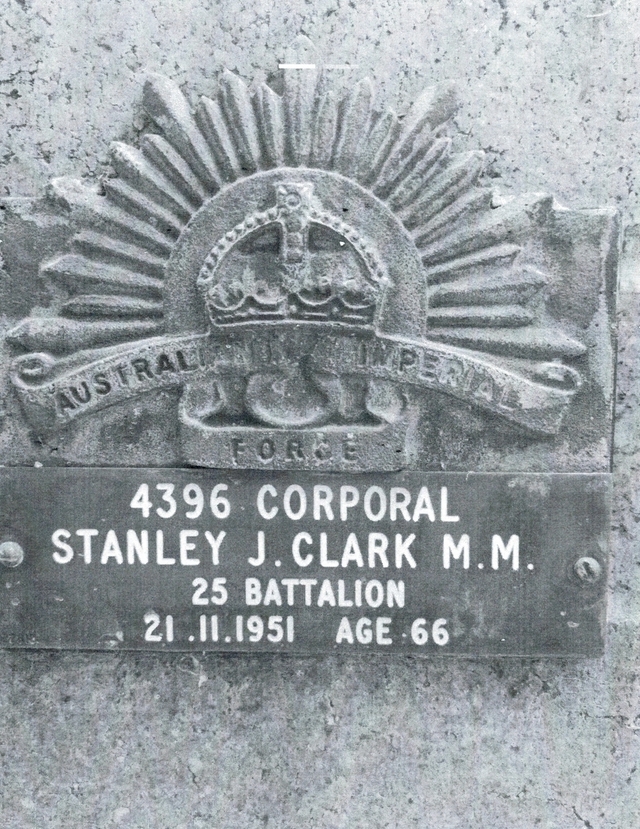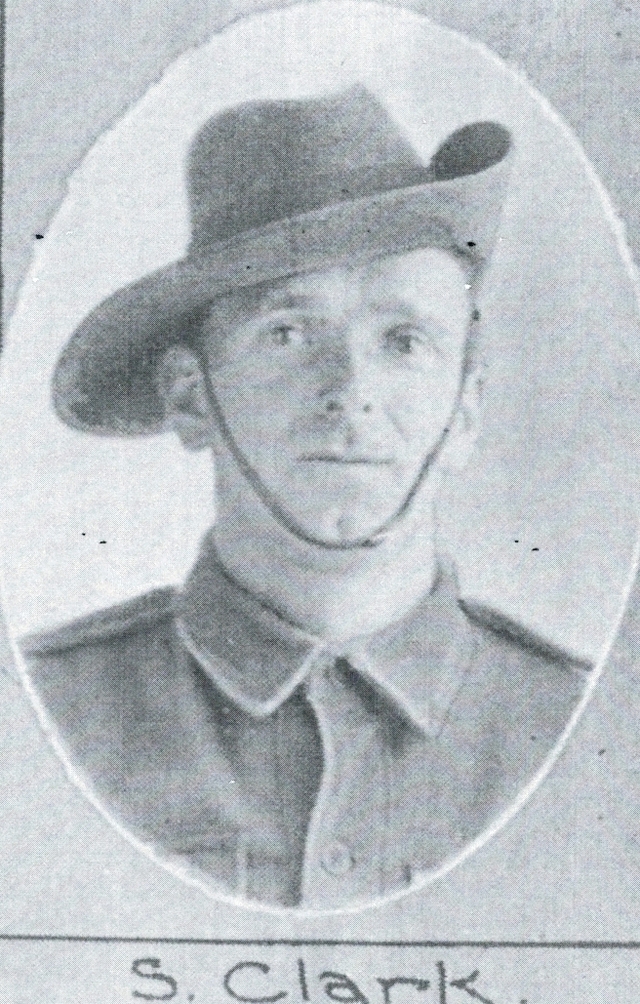Once again, Warwick has produced another hero in the person of Stanley James Clark, who got caught up in the Great War of 1914 – 1918 while working in the district at that time. Stan Clark follows in the tradition of many rural workers who for various reasons were working in Warwick as a farm laborer when Australia called for recruits, inspired perhaps, from the Gallipoli landing and the courage and commitment shown by those brave young men who started the legend of the ANZACS. Here is Stan’s story.
Stanley James Clark was born in 1885 in Horsham, Victoria, the eldest son of Robert and Jane Clark. Stan appeared to move from Horsham in Victoria to Warwick in Queensland looking for work when he got caught up in the patriotic Dungaree recruitment march which started just outside Warwick. The march was due to the response from the Australian Government seeking recruits to enlist, and Stan was one of the first 15 recruits to leave Warwick and march to Brisbane, travelling via regional towns to encourage young men to join them. The march was undertaken from the tiny settlement of Pratten on the Southern Downs on 6th November 1915, arriving in Brisbane with over 100 new enlistees on 30th November 1915. Large crowds along the way showed enthusiastic support to the marchers, and after official receptions from the Queensland Premier T. H. Ryan, those who enlisted were taken to Thompson’s Paddock at Enoggera for training. Stan had enlisted earlier on 15th November and after the march and initial training was posted to the 25th Battalion, 11th Reinforcements. He travelled with the battalion to the war zone on board the HMAT “Star of Victoria” on 31st March 1916, arriving at Aden after a journey up the Suez Canal to Alexandria in Egypt.
The 25th Battalion went into a period of intensive training at Mardi on the Nile and at Mena. Stan was then posted to the 7th Brigade and sent to France where he took part in the allied advance to the Somme taking part in some intensive battles at the Menin Road, Broodseinde, Passchendaele, Messines and Ypres. On the 4th. October 1917, during the German spring offensive, Stan showed outstanding bravery and courage which saw his commanding officer nominate him for the Military Medal after the allied attack at Zonnebere. This is what his C.O. wrote:
“During an attack on an enemy position at Zonnebere on 4th October 1917, this man was one
of the Battalion Observers. Although the only Observer left, and he himself wounded, he remained
on duty at his post for twenty four hours and carried out excellent observation work. The observation
post was heavily shelled the whole time. His courage and work the whole time was excellent”
Later, Stan was then caught up in the German use of gas as a weapon and was gassed on 23rd May 1918. Stan was invalided back to England and admitted to the U.K.’s 1st Birmingham War Hospital at Rednal, on 27th May 1918. So serious was the gassing that he was also admitted to the 3rd Australian Auxillary Hospital and later, suffered from scabies before being invalided back to Australia on board the HT “Saxon” arriving on the 11th. December 1918.
Stan’s documents seemed to indicate that he never returned to Warwick, but he lived in the Gympie area where he met and later, married Margaret Mulholland on 17th September 1931. It appeared that the lasting effects of his war gassing saw him hospitalised at the Greenslopes Military Hospital in Brisbane where he passed away on 21st November 1951.
Corporal Stanley James Clark of the 25th Battalion, AIF joined the legendary Anzacs that became an integral part of Australia’s history. Memorials dot the landscape of nearly every town and small settlements around the country. They will be eternally remembered in iron and stone monoliths, and the sacrifice of these brave men will mean that their names shall “Liveth Forever Evermore” (Ecclesiasticus 44;14) as a tribute to their commitment in World War 1. Stanley is forever remembered on the Dungaree Marcher’s Memorial in Warwick and again in his hometown of Horsham on the towns Presbyterian Church’s Roll of Honor.








